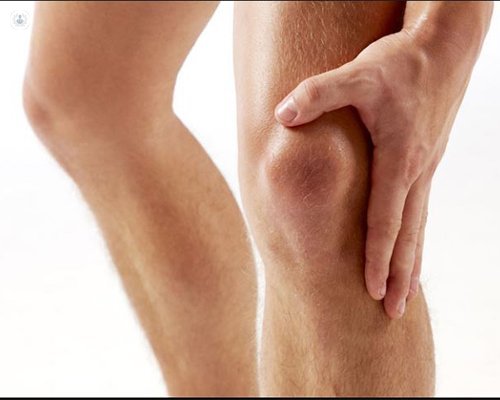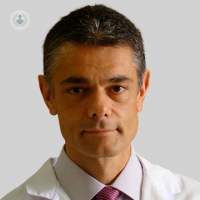Knee injuries, how to treat them?
Written by:Knee injuries have become a headache for athletes, especially runners or "runners". It is the largest of our joints, and has a very complex movement, in addition to withstand large forces of compression and tension.
In supporting loads contribute knee meniscus, tendons, muscles, ligaments and hyaline cartilage; all help in the distribution and absorption of loads, and to facilitate the movement of the joint, in which the patella includes. Keep in mind that the cartilage of the latter is very thick and delicate, so your thinning or damage, chondromalacia or patellar chondropathy , is a cause of pain and disability of complex solution. This poses a threat to any athlete, such as the corridor.
In fact, chondromalacia represents between 10% and 25% of visits to specialists in Traumatology and Sports Medicine and Physiotherapy by knee problems, affecting more young adults and women.
On the other hand, many cartilage injuries of the knee occur in the area of greatest load in athletes is relatively common lesions of the medial condyle relate to others such as the meniscus and anterior cruciate ligament.
Cartilage injuries in athletes
Cartilage injuries pose a threat to the athlete because they involve a difficult recovery and, in the worst case, may cause long - term, a degenerative process of osteoarthritis. This pathology is one of the most prevalent chronic diseases in developed societies, affecting the elderly, athletes, elite athletes and people suffering from obesity or other predisposing factors.
Since repair cartilage injuries is a major difficulty, prevention has become an important line of research, much or more than the treatment of established lesions.
Prevention options cartilage injuries
There are different options for preventing cartilage injuries, distinguished between surgical and nonsurgical:
Nonsurgical therapies most commonly used:
- Protective cartilage. The combination of chondroitin sulfate and Glucosamine Sulfate, two active ingredients, has the highest level of scientific evidence to slow or stop osteoarthritis, improve pain, inflammation and stiffness. Its effects on pain and function, long-term, are comparable to those of the latest generation anti-inflammatory drugs, Celebrex type.
- Intraarticular infiltrations with hyaluronic acid, autologous serum (ortokine) or plasma rich in growth factors. These infiltrations can get microrreparaciones cartilage, induce the synthesis of endogenous hyaluronic acid and, therefore, clinical and function and rigidity improvements.
- There are different types of hyaluronic acid, such as the low and high molecular weight. They have recently come to market new types of hyaluronic acid with best superior mechanical and biological properties, which already have publications that endorse.
- Plasma rich in growth factors, which offers a good clinical response. However, in cases cartilage wear this therapy is inconsistent.
- Ortokine. It is an evolution of platelet-rich plasma, more powerful. It maintains many of the effects of CFRP but adds a huge analgesic and antiinflammatory ability to make antibodies against the molecule that causes pain and inflammation in arthritic joint. Besides its effects seem to last longer (2-3 years).
- True stem cells that can be cultivated and uncultivated. These treatments are still little scientific evidence. Although compliance with the anti-inflammatory and microrreparaciones clinical improvement and function are very expensive therapies that, at present, can not offer either joint regeneration or rejuvenation.
- With all the patient you can achieve clinical improvements that allow the patient to exercise more, lose weight, muscle and improve your pain threshold.
Surgical therapies most commonly used:
- symptomatic treatment. It is washing and synovial fluid meniscus lesions, loose bodies, etc., by arthroscopy.
- Stem cells or fibroblasts from bone marrow. It is based on stimulating subchondral bone to allow the stem cells are in the bone bed, on which rests the cartilage, get a remodeling and formation of a film or a plug of fibrocartilage repair covering and regenerate the injury.
- Cell induction of chondrogenesis. The intent of this technique is to use other tissues more differentiation potential, whose cells can be transformed into cartilage chondrocytes forming. Techniques chondrocyte transplantation as autologous implantation (ACI) or autologous chondrocyte implantation induced (MACI ®) extracellular matrix are indicated when the damage is in a particular area, a defect or patch (a crater in the cartilage). The success rate is around 90% in lesions of the femoral condyles. 84% in osteochondritis dissecans and 70% in lesions of cartilage of the kneecap.
- Transplantation for osteochondral lesions of the knee cartilage. This transplantation may be the patient -autoinjerto osteocondral- own or donor -aloinjerto- The disadvantages of the latter are poor cell viability (10-30%), the surgical difficulty and the risk of infection, immunologic reactions or transmission of viral diseases, but are exceptional.
Factors that will make us bow down by one technique or another are, among others, the size and location of the lesion, the level of sports and work activity, expectations regarding the outcome or the economic cost of the procedure.



